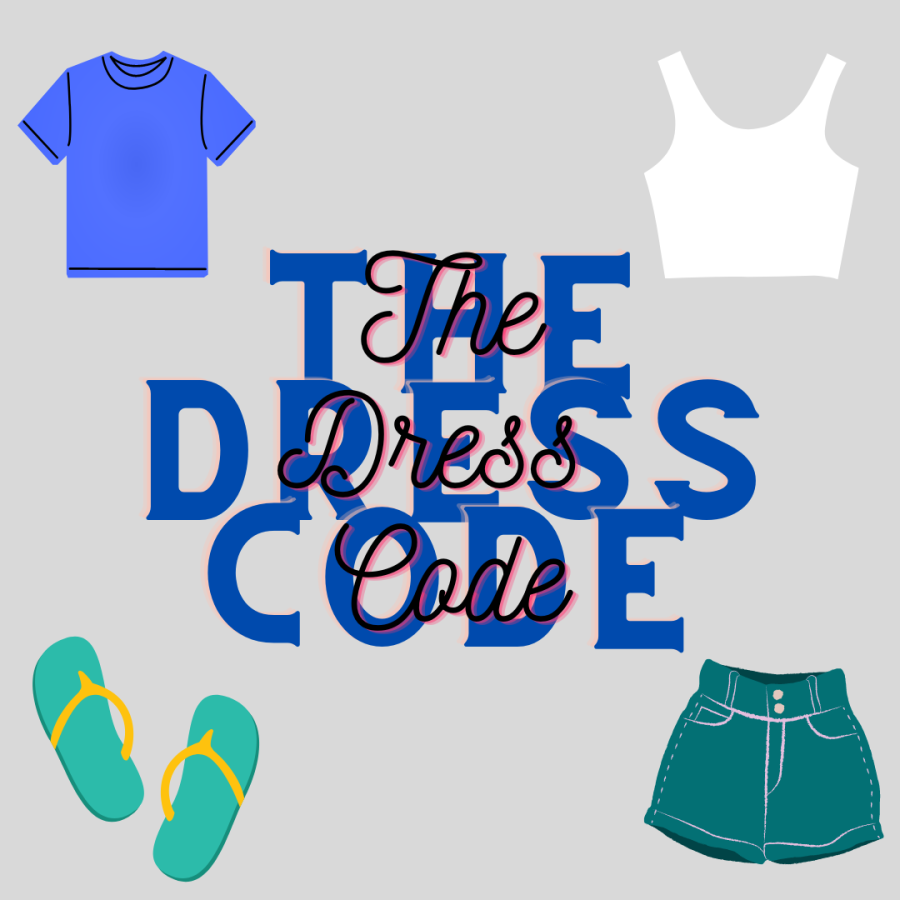Dress Code: Is it Fair?
Chances are, if you went up to a student and asked them their opinions on the dress code, they would probably answer somewhere along the lines of “It pinpoints girls,” and “I don’t like it,” and pretty much everyone on campus would agree. Well, except for most of our administrative staff. In an interview, Assistant Principal Ms. Park described the dress code as “gender neutral” and easy for students to “express themselves”. 8th grade student Zora McCoy gave a rather contradicting point of view in an interview, saying that the dress code “purely targets women,” and referred to it as “blatant sexism,” saying that “When your body is actively policed, it just adds to low self esteem, which could in the future could lead you to danger”. After hearing such a compelling statement from a student, the declaration from Ms. Park claiming the dress code is “gender neutral” seems like something that’s accurate from the administrator’s point of view, but not from the students’.
The easiest way to see why the administrators see the dress code as “gender neutral” and that it allows students to “express themselves” is to see it as the students are the lower class in the Rosemont “economy,” and the administrators are the upper class. Between the lower class and the upper class, there will always be a noticeable difference in perspective among certain issues, just like there will always be differences among the administrators and the students. To the administrators, the dress code seems like something that protects students and keeps them safe, when in reality, the students feel that it is not fair and is oppressive. When asked about his opinions on the dress code, 7th grade student Aiden Ramierez-Cruz said, “I don’t think it’s fair”.
Now let us take a look at how the dress code differentiates what is okay for boys to wear, versus what is okay for girls to wear. For boys, you are not allowed to “sag” (wearing one’s pants around the hips so that they sag down and bunch up around the ankles). In addition, boys are not allowed to wear shirts with obscene or lewd images, such as images that suggest or mention alcohol or drug use. These are very generic rules whilst the ones targeted towards females pinpoint their bodies and how they are apparently “distracting”. This includes that girls must not wear spaghetti straps (thin shoulder straps often used on tank tops). As well as halter tops and shirts that show your midriff which only targets womens fashion. Furthermore, the dress code states that bra straps are not to be shown under any circumstances, even though they are needed for female students. For both genders, pajama pants are not allowed for an unspecified reason. The difference between what is appropriate for boys and girls to wear is vastly different, and although the dress code is considered “not about gender,” it appears that gender might have something to do with it.
In the eyes of the students, it appears as though the main administrator who is “dress coding” people is Assistant Principal Ms. Park. In order to test this theory, The Spartan Scroll went and found students that had been “dress coded” and asked who told them to change into their P.E. clothes. Over the course of a combined total of 45 minutes (one snack period and one lunch period), the Spartan Scroll found that in 7 female students and in 7 male students, all of them had been “dress coded” by Ms Park. The results of this study concluded that all students who participated in this study have been “dress coded” by Ms. Park.
Although the rules seem to be strict, there are ways for students to amend the dress code. In the past, students have made changes to the dress code by petitioning the allowance of certain clothing (i.e., ripped jeans, wearing hats indoors). Currently there is a petition to allow pajama pants to be worn, so if you think that there is a rule that is outdated and unfair, you can always petition to change the dress code. So from what the Spartan Scroll observed the dress code seems to be discriminatory, and unnecessary with some rules, but you can decide how you choose to view it.
Your donation will support the student journalists of Rosemont Middle School. Your contribution will allow us to purchase equipment and cover our annual website costs.

Isabella Chiriboga, a Los Angeles native, recently moved from Sacramento, where she grew up and attended elementary school. She enjoys volleyball, theater,...

Hi, I'm Leland Elmes. I love to be outdoors, specifically backpacking and camping. I'm in 8th grade and I am an Editor for the News section of the Spartan...

Maryn Spangler is a 7th grader. She is a competitive dancer for Revolution Dance Center in Montrose. Her previous school was Lincoln Elementary. She...

Finnley (Finn) Gardner, is an eighth grader. He was born in Edmonton and moved to the US when he was six months old. He enjoys history and sports, mostly...















